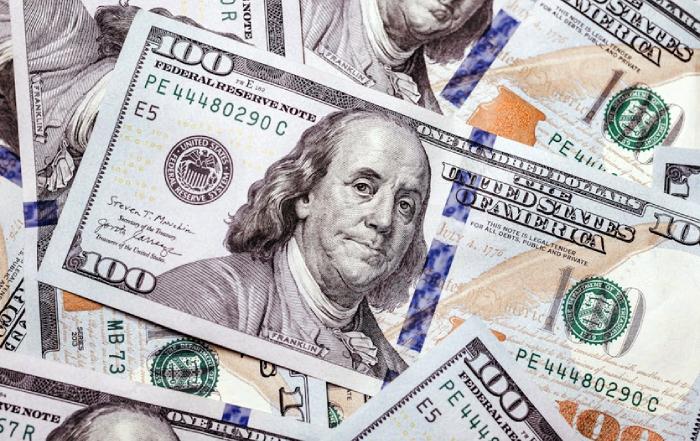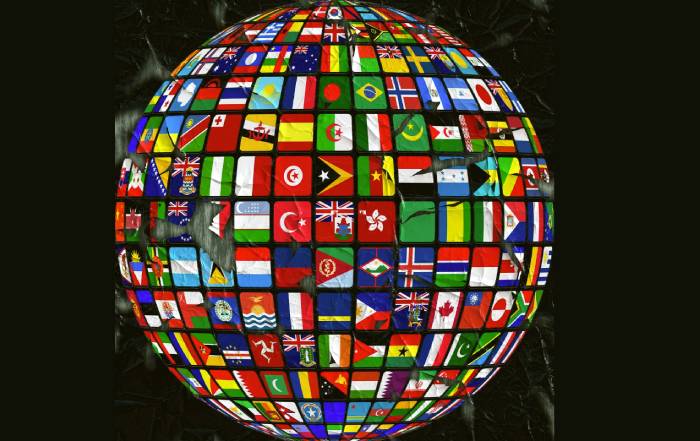The September 2025 ruling against Google LLC in the United States has become one of the most important developments in the history of digital antitrust law. The decision, delivered by U.S. District Judge Amit P. Mehta, reshaped the narrative around monopoly power in the age of artificial intelligence and data-driven economies. For readers of usa-update.com, this case provides crucial insights into how law, business, and technology intersect at a global level, influencing markets, employment, and consumer choice.
The Significance of the Ruling
In his ruling, Judge Mehta found that Google had illegally maintained its monopoly in online search services, primarily through exclusive contracts and distribution agreements that locked its competitors out of essential markets. Yet, unlike earlier historic antitrust cases such as the breakup of AT&T in the 1980s or the battle with Microsoft in the late 1990s, this decision emphasized measured remedies rather than dramatic structural changes.
The judgment reflected an understanding that today’s technology landscape is shaped by artificial intelligence, global cloud infrastructure, and cross-platform ecosystems. A heavy-handed breakup, while tempting for regulators, could have led to instability not only for Google but also for billions of global users who depend on its services for everyday life, business operations, and employment.
Remedies Imposed by the Court
Ending Exclusive Distribution Practices
The most significant outcome of the ruling was the ban on exclusive distribution deals that previously gave Google near-total dominance on smartphones and browsers. For years, Google secured default placement on devices such as Apple iPhones, Android phones, and third-party browsers by paying billions of dollars annually. These agreements made it nearly impossible for rivals like Microsoft Bing, DuckDuckGo, or newer AI-based platforms to gain visibility with mainstream users.
Under the new order, device makers and platform providers must provide genuine choice screens or alternative methods for users to select their preferred search provider. This single measure could dramatically shift competitive dynamics in the U.S. and abroad. Learn more about competition and regulatory debates.
Data Access for Competitors
Another key provision requires Google to share portions of its search index and anonymized query data with competitors. For years, Google’s unmatched data resources provided it with a self-reinforcing advantage, making its results faster and more relevant. By giving competitors limited access, the court aims to lower barriers to entry, allowing smaller firms to improve their search algorithms and deliver higher-quality results.
Chrome and Default Agreements Survive
Interestingly, Judge Mehta stopped short of dismantling Google’s Chrome browser or ending its multibillion-dollar deals with Apple to remain the default search engine on Safari. These decisions disappointed many advocates who had hoped for a more aggressive intervention. The judge explained that such measures could have unintended ripple effects across international markets and consumer usage patterns.
For investors and executives in the Business and Technology sectors, this outcome was seen as a sign of regulatory restraint, balancing competition enforcement with operational stability.
Google Antitrust Case Timeline
Interactive timeline of key events and impacts
August 2024: Initial Ruling
Judge Mehta concludes Google violated Sherman Antitrust Act through exclusionary practices in search monopoly.
September 2025: Remedies Imposed
Court implements measured remedies: bans exclusive deals, requires data sharing, preserves Chrome and Apple partnership.
What's Next: Ongoing Impact
Virginia ad tech case pending, AI competitors emerging, global regulatory momentum building across multiple jurisdictions.
Market Response and Investor Sentiment
Immediately following the decision, Alphabet’s stock surged by over 7%, reflecting relief on Wall Street that the remedies were limited in scope. Apple shares also climbed by 3%, as the continuation of default agreements safeguarded one of its most profitable partnerships.
Markets understood that while Google was being curtailed, the ruling did not destabilize its primary revenue streams in advertising or disrupt its flagship browser. Analysts across leading investment banks argued that the decision maintained business continuity while still setting a precedent that could guide future regulation.
For readers focused on Finance and investment, the case demonstrated how regulatory outcomes directly influence stock markets, employment prospects in the technology sector, and overall investor confidence.
Broader Legal Context
This ruling built on earlier findings from August 2024, when Judge Mehta concluded that Google had violated Sections 1 and 2 of the Sherman Antitrust Act by maintaining dominance through exclusionary practices. The 2025 remedies trial allowed both the Department of Justice (DOJ) and Google to present extensive arguments, with the DOJ pushing for structural remedies including a possible divestiture of Chrome.
The court’s final decision opted for measured concessions instead of structural breakups, signaling that U.S. antitrust enforcement in the digital age may lean toward functional remedies—such as opening data access or mandating choice—rather than the traditional path of splitting companies into separate entities.
The International Dimension
The United States is not the only jurisdiction scrutinizing Google. The European Commission, through its Directorate-General for Competition, has already fined Google billions of euros over Android and shopping service practices. Regulators in India, Australia, South Korea, and Brazil have also launched investigations or imposed fines.
This U.S. case now adds a powerful layer to global antitrust momentum, reinforcing the idea that no technology company is beyond regulatory oversight. For audiences following International news, the case reflects a worldwide movement toward digital accountability and fairness.
Implications for AI and Emerging Competitors
Perhaps the most forward-looking part of Judge Mehta’s ruling is its recognition that AI search platforms—such as ChatGPT, Perplexity AI, and Anthropic’s Claude—are emerging as credible challengers to traditional search engines. Unlike earlier eras, where search revolved solely around links and keywords, the new generation of AI tools offers conversational interfaces capable of synthesizing information in real time.
By loosening Google’s control over distribution and search data, the ruling indirectly accelerates innovation in AI search. Rivals now have a better chance to challenge Google’s dominance by building next-generation information ecosystems that serve both consumers and businesses more effectively. Readers interested in technological change can find ongoing updates in the Technology section of usa-update.com.
Political and Regulatory Reactions
The decision drew immediate attention from lawmakers, regulators, and policy experts across the United States and around the world. While the ruling represented a significant win for the Department of Justice, it was also viewed as a compromise that fell short of the sweeping remedies that many antitrust advocates had demanded.
Congressional Leaders Respond
Senator Amy Klobuchar, a long-time proponent of stronger antitrust enforcement, expressed cautious approval but stressed that the ruling underscored the need for updated legislation to deal with the realities of the digital economy. She argued that Google’s power, even when constrained by this ruling, continues to raise concerns about consumer choice and market fairness.
In contrast, some members of Congress voiced concerns that aggressive remedies could unintentionally harm American competitiveness at a time when the country is locked in a technological race with China and other global players. These lawmakers highlighted the importance of balancing consumer protection with economic growth, a theme central to debates in the Economy section of usa-update.com.
Regulatory Agencies Take Note
Beyond Congress, other U.S. regulatory bodies such as the Federal Trade Commission (FTC) are likely to use this case as a reference point when pursuing investigations into other tech giants. The ruling may serve as a precedent in cases involving Amazon, Apple, or Meta, where similar concerns about monopolistic behavior in app stores, advertising, and data ecosystems persist.
Internationally, regulators in Europe and Asia welcomed the ruling as validation of their own efforts. The European Union, for instance, has recently enacted the Digital Markets Act (DMA), which mandates fairer practices for gatekeeper platforms. Judge Mehta’s decision aligns with this spirit, reinforcing a transatlantic consensus on the need for stronger digital oversight.
Implications for Consumers
For everyday users of search engines and digital platforms, the ruling has both immediate and long-term consequences.
Greater Choice in Digital Interfaces
The ban on exclusive contracts means that when consumers purchase new devices—whether smartphones, laptops, or smart TVs—they may soon see choice screens prompting them to select their preferred search engine. This could make it easier for smaller players such as DuckDuckGo or new AI-driven platforms to gain adoption, especially among users who value privacy or alternative experiences.
Data and Privacy Considerations
By requiring Google to share search data with competitors in limited form, the court is fostering a more competitive environment. However, consumer advocates remain vigilant about how this data-sharing will be implemented. Safeguards must ensure that privacy is protected while enabling rivals to improve their services. Readers concerned with the Consumer perspective will find this development particularly relevant, as it touches on both transparency and accountability in digital ecosystems.
Innovation Benefits for End Users
Competition historically drives innovation. If smaller firms gain the ability to refine their search algorithms or leverage AI in new ways, consumers could benefit from more accurate, personalized, and diverse online experiences. This aligns with the broader goals of antitrust law: not only to limit monopoly power but also to enhance consumer welfare over the long term.
Employment and Industry Impact
The case also carries important consequences for jobs and employment in the U.S. technology sector.
Job Creation Through Competition
If rival search engines and AI platforms can grow their market share, they will likely expand hiring in engineering, data science, and customer support roles. The entry of new players may foster job growth across the tech ecosystem, from Silicon Valley startups to regional firms specializing in AI and software development. Explore more on the employment front through usa-update.com’s Jobs and Employment coverage.
Stability at Google and Its Partners
For Google, the absence of structural remedies like a Chrome divestiture means that its workforce of more than 180,000 employees worldwide faces no immediate disruption. Default search agreements with Apple and other partners remain intact, ensuring continuity of major revenue streams that fund salaries, research, and benefits.
The Talent Market in AI
Perhaps most importantly, the ruling underscores the centrality of AI talent in shaping the future of search. Companies seeking to challenge Google must recruit engineers and researchers capable of designing large language models and advanced data systems. This trend is likely to intensify the competition for skilled professionals across the United States, Europe, and Asia.
The Broader Antitrust Landscape
Other Cases Against Google
This is not the only legal battle confronting the company. In April 2025, a federal judge in Virginia ruled that Google had illegally monopolized ad tech markets, setting the stage for another round of remedies that could include divestiture. The combined weight of these cases suggests that regulators are coordinating efforts to address Google’s influence across multiple business lines.
The Role of State Attorneys General
State-level actions also play a role. Attorneys General from dozens of states have filed lawsuits targeting Google’s practices in advertising, app distribution, and search. The momentum at both the federal and state levels highlights a multi-layered approach to regulation, ensuring that antitrust enforcement is not confined to Washington, D.C.
Lessons from Past Cases
The decision evokes comparisons to earlier antitrust milestones, such as United States v. Microsoft Corp., where the government’s pursuit of structural remedies ended in a negotiated settlement. Analysts argue that Judge Mehta’s approach mirrors lessons learned from that era—favoring behavioral remedies that preserve innovation while limiting anti-competitive conduct.
Implications for Global Business
Businesses worldwide are closely watching how this ruling reshapes competitive dynamics.
Opportunities for Startups and Rivals
For startups in the search and AI industries, this ruling lowers the barriers to entry. Companies that once struggled to gain visibility due to Google’s dominance may now find pathways to market penetration. Investors may become more willing to fund such ventures, anticipating regulatory conditions that are more favorable to challengers.
Corporate Strategy Adjustments
Large corporations that rely heavily on Google’s advertising services are evaluating what the ruling means for their digital marketing strategies. If competitors strengthen their platforms, brands may diversify their advertising budgets across multiple channels. For businesses tracking such changes, the Business and Economy sections provide insights into shifting landscapes.
International Trade and Competition
The ruling also reinforces U.S. leadership in shaping global competition policy. As nations from Europe to Asia consider how to regulate digital platforms, Judge Mehta’s decision will serve as a reference point. It signals that even the most powerful corporations must adapt to evolving legal norms, strengthening the credibility of American institutions on the global stage.
Looking Ahead: The Role of Artificial Intelligence
One of the most striking aspects of this case is the court’s acknowledgment of AI-driven disruption in search markets. Unlike earlier eras, where search was defined by lists of blue links, the new generation of tools—powered by large language models—provides direct answers, summaries, and context in real time.
Google itself has leaned heavily into this transformation with products like Gemini AI, integrating generative models into its search experience. Yet competitors such as OpenAI’s ChatGPT, Anthropic’s Claude, and Perplexity AI are gaining momentum, particularly among younger demographics and professionals seeking efficiency.
By limiting Google’s ability to cement its dominance through exclusive deals, the ruling creates room for these emerging tools to thrive, potentially reshaping the way knowledge is consumed and shared across the world.
Global Economic Implications
The ruling against Google does not exist in isolation—it carries ripple effects across international markets, competition law frameworks, and economic growth strategies.
Impact on Digital Markets Worldwide
Search engines are not just gateways to information; they are pillars of the global digital economy, influencing advertising, e-commerce, travel, and financial services. By reducing Google’s ability to lock in default contracts, Judge Mehta’s ruling encourages more open competition, which could stimulate growth among international firms developing AI search and advertising alternatives.
For example, European startups may find greater opportunities to scale in the U.S. market, while Asian innovators in Japan, South Korea, and Singapore could leverage their domestic strengths in AI to enter new territories. This aligns with broader trends in International trade and technology competition.
U.S. Competitiveness in a Global Race
The United States is locked in a tech rivalry with China, particularly in artificial intelligence and digital ecosystems. By enforcing antitrust remedies that prioritize consumer choice and innovation, the U.S. is signaling its commitment to maintaining open and competitive markets, rather than allowing one company to dominate strategic industries. This not only protects domestic consumers but also strengthens America’s credibility as a global leader in regulatory innovation.
Future Litigation and Legal Precedents
Pending Ad Tech Case
Google’s legal troubles are far from over. In Virginia, Judge Leonie Brinkema is overseeing a case targeting Google’s dominance in digital advertising technologies. That trial, which could result in a forced divestiture of Google’s ad exchange or demand-side platforms, represents an even more direct threat to the company’s business model than the search monopoly case.
Should the ad tech ruling come down hard, the combined weight of remedies from both cases may fundamentally reshape Google’s role in the internet economy, possibly opening more space for rivals such as The Trade Desk and Microsoft.
Broader Enforcement Trends
The FTC and the DOJ are pursuing investigations into other firms as well, including Apple’s App Store practices, Amazon’s e-commerce operations, and Meta’s acquisitions in virtual reality. The Google decision thus sets a legal precedent that may embolden regulators to pursue similar remedies against other major players.
For legal scholars and business strategists, this ruling is another chapter in the evolving story of modern antitrust enforcement, where courts are challenged to balance competition law with rapidly evolving technology.
Effects on Innovation Ecosystems
Startups and Venture Capital
The new conditions imposed on Google could inspire renewed confidence among venture capital investors who had previously hesitated to fund companies competing with entrenched giants. Startups focusing on AI-driven search, privacy-first browsers, and niche data services may now have a clearer path to scale. This is particularly relevant for venture ecosystems in Silicon Valley, London, Berlin, and Tel Aviv, where entrepreneurial energy thrives but often collides with fears of being crushed by monopolistic incumbents.
Academic and Research Communities
Universities and research institutions may also benefit from the increased availability of search data. The ruling’s data-sharing requirements could create opportunities for academic collaborations, spurring innovation in machine learning, linguistics, and human-computer interaction. By opening the door to greater experimentation, the decision fosters knowledge diversity, a hallmark of competitive markets.
Consumer Technology Trends
As rivals develop their platforms, consumers may soon enjoy radically new search experiences. Imagine devices that blend voice search, AI summarization, and predictive personalization seamlessly across home, work, and travel contexts. With Google’s distribution advantages reduced, the playing field is better positioned for multi-platform innovation.
Business Strategy in a Post-Ruling Environment
Corporate Adaptations
For corporate leaders, the decision is a reminder that reliance on a single platform—whether for advertising, search, or distribution—carries regulatory risks. Businesses may begin diversifying their partnerships, investing in alternative search engines or AI assistants to reduce dependence on Google.
Advertising Markets
Advertisers are also watching closely. If rivals grow their market share, advertising budgets may spread more evenly across platforms, leading to more competitive pricing and innovation in ad formats. This dynamic could benefit small and medium-sized enterprises that often struggle with rising costs on Google’s dominant ad exchange.
Technology Providers and Partnerships
For technology firms—from device makers to software developers—the ruling provides both challenges and opportunities. Manufacturers must redesign user experiences to incorporate search choice, while software companies may experiment with integrating alternative search engines into their products. These shifts are expected to ripple across industries ranging from travel to finance, both of which rely heavily on search-driven traffic.
Readers seeking to follow these trends can explore insights across usa-update.com’s Business, Finance, and Travel sections.
The Consumer Perspective Revisited
At the heart of the ruling lies the question of how consumers will ultimately benefit.
Short-Term Gains: More visible options for search providers on new devices, modest increases in privacy transparency, and potentially improved competition in AI services.
Medium-Term Gains: Enhanced search diversity, lower advertising costs that could be passed along in pricing, and a new wave of innovation across industries.
Long-Term Gains: A more resilient, pluralistic digital ecosystem where no single company controls the primary gateway to information, knowledge, and commerce.
The ruling thus embodies the philosophy that consumer choice is central to democracy in the digital age.
Cultural and Societal Dimensions
Beyond economics and law, the ruling has broader cultural significance. Search engines shape not just commerce but also public discourse, political participation, and knowledge formation. Allowing greater competition ensures that no single entity monopolizes the flow of information, reducing risks of bias and manipulation.
For societies worldwide, the case underscores the value of maintaining diverse information channels. It reinforces democratic principles by ensuring that citizens have access to multiple perspectives rather than a homogenized narrative dictated by one dominant player. This cultural resonance explains why the story has captured attention not only in the United States but also in Europe, Asia, Africa, and South America.
Looking to the Future
The ruling marks a turning point in how governments address the power of digital platforms. While not as radical as some critics desired, Judge Mehta’s decision lays down a framework for pragmatic antitrust enforcement in the age of AI.
Future developments to watch include:
The outcome of the ad tech trial in Virginia.
Legislative proposals in Congress aimed at strengthening antitrust law.
International coordination on digital competition, particularly between the U.S. and the European Union.
The growth of AI-driven competitors and how they reshape user behavior in search and beyond.
For professionals in News, Events, and Technology, these issues will remain central to the discourse of 2025 and beyond.
A Calibrated Victory for Competition
Judge Amit Mehta’s September 2025 ruling against Google is both historic and pragmatic. It confirms the company’s monopolistic conduct, introduces remedies that open space for competitors, and acknowledges the disruptive potential of AI without destabilizing the global digital economy.
For Google, it represents a legal and reputational setback, though not an existential threat. For regulators, it is a carefully measured victory that sets precedent for future cases. For consumers, it is a step toward greater choice, privacy, and innovation.
Most importantly, for the broader economy and global society, the ruling underscores a timeless truth: fair competition is the foundation of progress. In a world where technology increasingly defines opportunity, culture, and democracy, the court’s decision reminds us that even the most powerful corporations remain subject to accountability.










